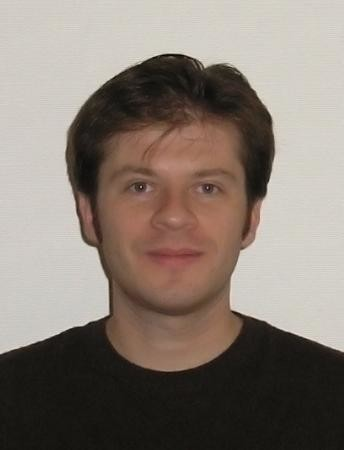
Bryant Gipson
Bryant Gipson has been at Google since 2013, for pre-Google publications see Google Scholar.
Authored Publications
Sort By
Forecasting influenza activity using machine-learned global mobility map
Srinivasan Venkatramanan
Adam Sadilek
Arindam Fadikar
Christopher L. Barrett
Matthew Biggerstaff
Jiangzhuo Chen
Xerxes Dotiwalla
Paul Eastham
Dave Higdon
Onur Kucuktunc
Allison Lieber
Bryan L. Lewis
Zane Reynolds
Anil K. Vullikanti
Lijing Wang
Madhav Marathe
Nature Communications, https://www.nature.com/articles/s41467-021-21018-5 (2021)
Preview abstract
Human mobility is a primary driver of infectious disease spread. However, existing data is limited in availability, coverage, granularity, and timeliness. Data-driven forecasts of disease dynamics are crucial for decision-making by health officials and private citizens alike. In this work, we focus on a machine-learned anonymized mobility map (hereon referred to as AMM) aggregated over hundreds of millions of smartphones and evaluate its utility in forecasting epidemics. We factor AMM into a metapopulation model to retrospectively forecast influenza in the USA and Australia. We show that the AMM model performs on-par with those based on commuter surveys, which are sparsely available and expensive. We also compare it with gravity and radiation based models of mobility, and find that the radiation model’s performance is quite similar to AMM and commuter flows. Additionally, we demonstrate our model’s ability to predict disease spread even across state boundaries. Our work contributes towards developing timely infectious disease forecasting at a global scale using human mobility datasets expanding their applications in the area of infectious disease epidemiology.
View details
Impacts of social distancing policies on mobility and COVID-19 case growth in the US
Gregory Alexander Wellenius
Swapnil Suresh Vispute
Valeria Espinosa
Thomas Tsai
Jonathan Hennessy
Andrew Dai
Krishna Kumar Gadepalli
Adam Boulanger
Adam Pearce
Chaitanya Kamath
Arran Schlosberg
Catherine Bendebury
Chinmoy Mandayam
Charlotte Stanton
Shailesh Bavadekar
Christopher David Pluntke
Damien Desfontaines
Benjamin H. Jacobson
Zan Armstrong
Andrew Philip Widdowson
Katherine Chou
Andrew Nathaniel Oplinger
Ashish K. Jha
Evgeniy Gabrilovich
Nature Communications (2021)
A General Purpose Transpiler for Fully Homomorphic Encryption
Shruthi Gorantala
Sean Purser-Haskell
Asra Ali
Eric P. Astor
Itai Zukerman
Sam Ruth
Sasha Kulankhina
Alain Forget
David Marn
Cameron Tew
Rafael Misoczki
Bernat Guillen
Xinyu Ye
Damien Desfontaines
Aishe Krishnamurthy
Miguel Guevara
Google LLC (2021)
Preview abstract
Fully homomorphic encryption (FHE) is an encryption scheme which enables computation on encrypted data without revealing the underlying data. While there have been many advances in the field of FHE, developing programs using FHE still requires expertise in cryptography. In this white paper, we present a fully homomorphic encryption transpiler that allows developers to convert high-level code (e.g., C++) that works on unencrypted data into high-level code that operates on encrypted data. Thus, our transpiler makes transformations possible on encrypted data.
Our transpiler builds on Google's open-source XLS SDK (https://github.com/google/xls) and uses an off-the-shelf FHE library, TFHE (https://tfhe.github.io/tfhe/), to perform low-level FHE operations. The transpiler design is modular, which means the underlying FHE library as well as the high-level input and output languages can vary. This modularity will help accelerate FHE research by providing an easy way to compare arbitrary programs in different FHE schemes side-by-side. We hope this lays the groundwork for eventual easy adoption of FHE by software developers. As a proof-of-concept, we are releasing an experimental transpiler (https://github.com/google/fully-homomorphic-encryption/tree/main/transpiler) as open-source software.
View details
Differentially Private SQL with Bounded User Contribution
Celia Yuxin Zhang
Damien Desfontaines
Daniel Simmons-Marengo
Proceedings on Privacy Enhancing Technologies Symposium (2020) (to appear)
Preview abstract
Differential privacy (DP) provides a theoretical promise to users and analysts limiting the ability to determine a user’s contribution (if any) to the results of analysis. While there have been many theoretical explorations into the design of DP algorithms, few generically practical implementations of end-to-end DP engines exist. This paper presents a practical SQL-based engine that provides privacy guarantees with respect to groups of records, possibly spanning multiple tables, owned by a single entity. To date there has been little work to provide this type of protection for multiple rows in the same table or joins more generally. The engine utilizes a novel algorithm that evaluates query aggregations using a two-step process to enforce DP per owning entity. We limit the query sensitivity impact of joins by restricting and propagating a row-owner identifier at all steps, which allows us to limit row-owner contribution. For testing, we present a semi-decidable stochastic model-checking system, used to ensure privacy for the engine’s full range of statistical functions. This model provides stronger guarantees on privacy than existing systems with comparable accuracy. The result is a general purpose SQL engine, capable of answering typical analysis questions with little or no modification to existing queries.
View details
Hierarchical organization of urban mobility and its connection with city livability
Aleix Bassolas
Hugo Barbosa-Filho
Brian Dickinson
Xerxes Dotiwalla
Paul Eastham
Riccardo Gallotti
Gourab Ghoshal
Surendra A. Hazarie
Henry Kautz
Onur Kucuktunc
Allison Lieber
Adam Sadilek
José J. Ramasco
Nature Communications (2019)
Preview abstract
The recent trend of rapid urbanization makes it imperative to understand urban characteristics such as infrastructure, population distribution, jobs, and services that play a key role in urban livability and sustainability. A healthy debate exists on what constitutes optimal structure regarding livability in cities, interpolating, for instance, between mono- and poly-centric organization. Here anonymous and aggregated flows generated from three hundred million users, opted-in to Location History, are used to extract global Intra-urban trips. We develop a metric that allows us to classify cities and to establish a connection between mobility organization and key urban indicators. We demonstrate that cities with strong hierarchical mobility structure display an extensive use of public transport, higher levels of walkability, lower pollutant emissions per capita and better health indicators. Our framework outperforms previous metrics, is highly scalable and can be deployed with little cost, even in areas without resources for traditional data collection.
View details
